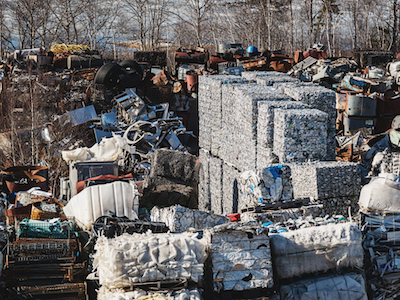Market

June 4, 2024
Global recycled market shifts: What does this mean for the recycled metals industry?
Written by Gabriella Vagnini
US Scrap Volumes and Global Market Trends
Recent reports indicate that U.S. scrap volumes have declined by 20%. While this decrease is not necessarily linked to recent price increases, it highlights the ongoing volatility in the market.
Meanwhile, China’s long-term goal of self-sufficiency in scrap remains challenging due to low generation levels. Currently, China is purchasing scrap in Europe at 93% of LME prices.
European scrap prices for #2 copper remains roughly between €300-330/mt, unchanged month-over-month due to insufficient market supply, despite reduced volumes from holiday periods. Scrap demand has remained stable, driven by long-term contracts with no immediate capacity increases expected. Current processing capacity stands at 150,000/mt/yr, projected to rise to roughly 200,000/mt/yr in the next two to three years.
In the U.S., scrap was bought at $250/mt, reflecting stable demand and reliance on long-term contracts. Additionally, a new flat scrap export tax of around $109/mt has been introduced in the UAE, impacting the market as the UAE processes scrap from internal and African sources to produce ingots.
Chinese Withdrawal and Market Adjustments
China withdrew from the Western scrap market after May 20 due to rising LME and Comex prices, halting new orders and postponing payments. This move forced sellers to roll their positions, increasing availability for other buyers. Traders are expected to be less willing to sell to China in the near future due to these disruptions. However, the smaller trading firms aren’t having the same issues, due to providing the flexibility to price their locked-in spread at a later date. Whereas the larger trading houses price at the time the deal is constructed.
In response, buyers have adjusted their discounts, with some in the U.S. increasing their buying price to around $400/mt. European scrap prices for #2 copper are now between €350-450/mt, with wider month-over-month ranges. Spanish and Italian mills have been out of the scrap market, potentially due to stockpiling and cash flow issues related to hedging.
US Market Insights and Chinese Influence
Despite a short squeeze, U.S. demand for scrap has remained strong, drawing down inventories. The market remains tight, with limited new material expected. Notably, U.S. cathode imports have decreased by 15,000mt per month since November, largely due to reduced Chilean production and logistical issues. This in turn affects the recycled metals supply.
Even with the open Comex copper arb, stocks have been depleting, signaling robust demand. The market eagerly awaits the reintroduction of material from major producers to meet the growing demand, especially in the U.S. and Mexico. Copper demand from data centers continues to exceed expectations, contributing to the strong market dynamics.
The withdrawal of China from the scrap market in response to rising prices underscores their strategic financial maneuvering. U.S. Midwest cathode premium is around 11c/lb, with potential spikes for urgent deliveries due to limited availability.
Hard Market Rates
The recent widening of spreads due to negative SFHE/LME arbitrage and China’s pullback has placed U.S. buyers in a favorable position to dictate prices. The widening has been more pronounced in #2 scrap.
Current copper scrap is said to be around: 42c-43c/lb for #2 copper, 21c-22c/lb for #1 copper, bare bright 8c/lb.
These developments reflect the dynamic and interconnected nature of the global scrap market, with significant implications for buyers and sellers alike. But with that said, we’ve been hearing that the local smaller firms aren’t having such difficulties buying the metals, as they supply the buy with the opportunity to price the agreed spread at will. This allows the seller the flexibility to capture the market on an uptick and not be locked into a price is such volatile waters.






